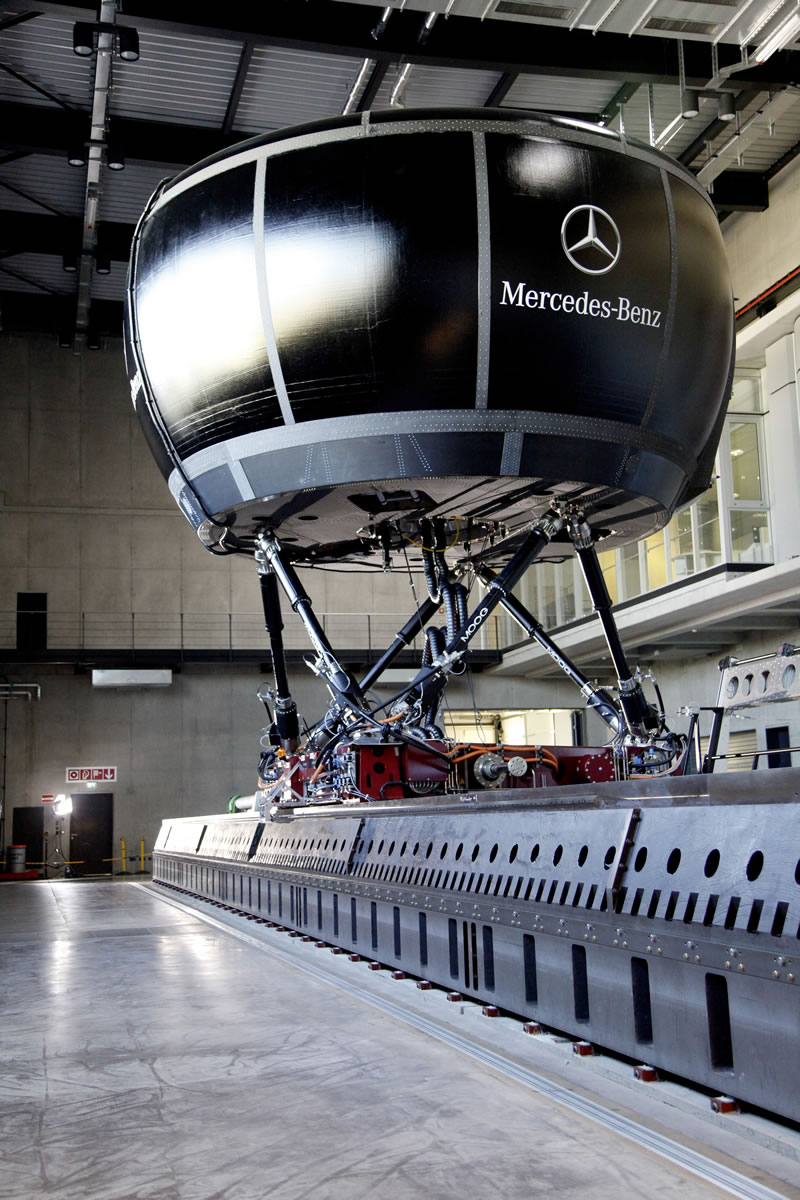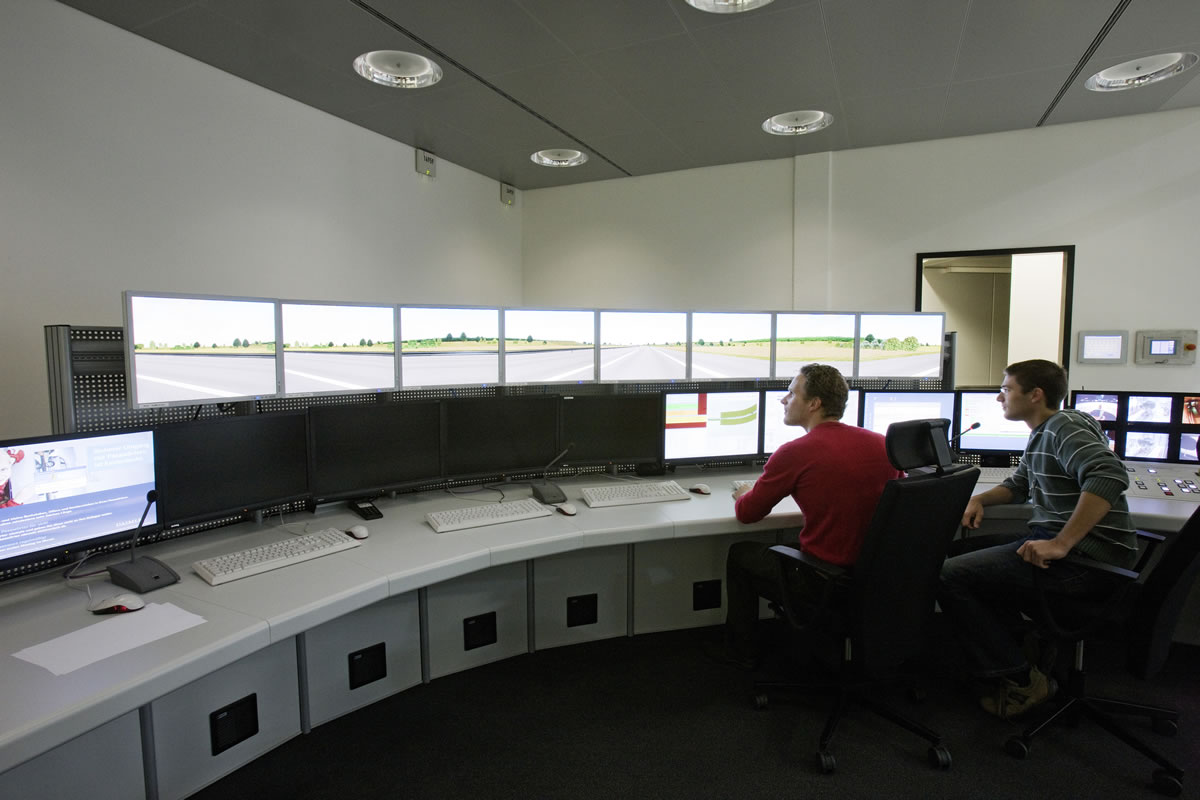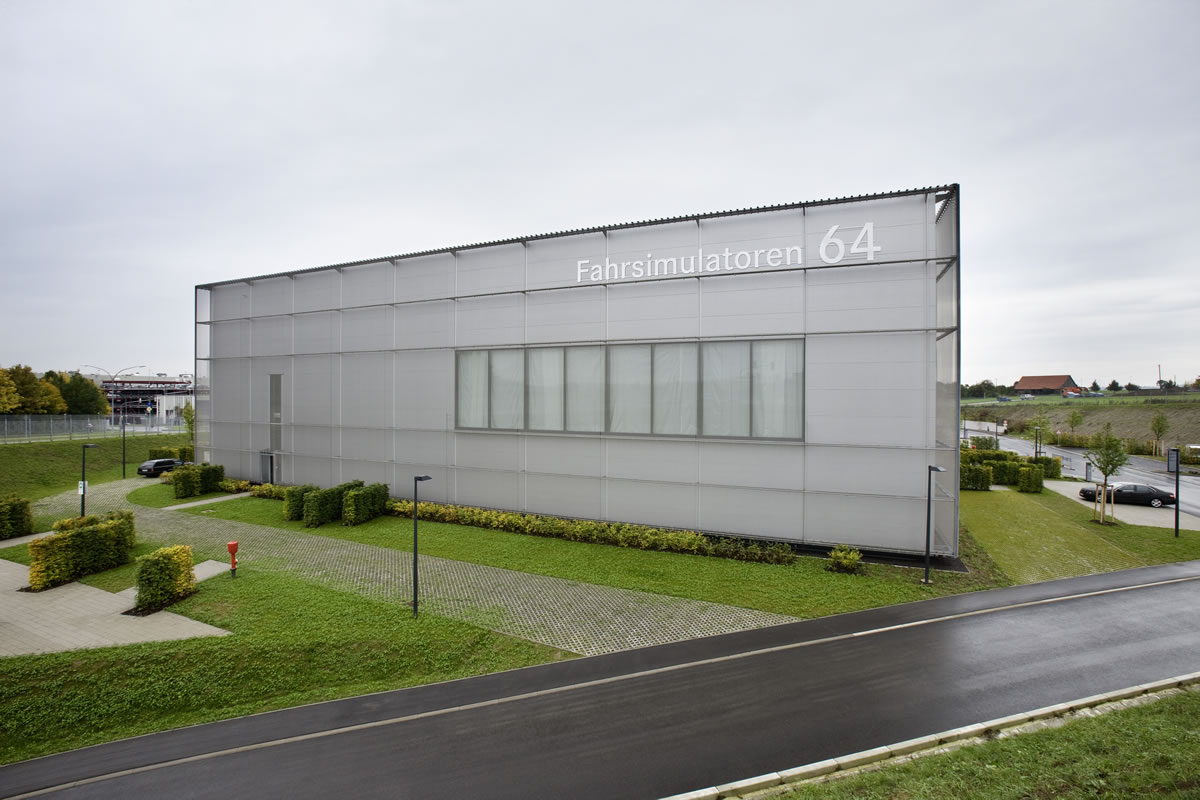With its 360° screen, fast electric power system and the twelve-metre-long rail for transverse or longitudinal movements, the new “Moving Base” simulator from Mercedes-Benz is the most powerful in the entire car industry. It went into operation at the end of 2010.
“With the simulator, we are able to realistically reproduce highly dynamic driving manoeuvres such as lane-changing and therefore research the behaviour of the driver and the vehicle in road traffic in great depth,” explains Prof. Dr. Thomas Weber, Member of the Daimler Board of Management responsible for Group Research and Head of Mercedes-Benz Cars Development. The system is not intended to replace real test drives entirely. The simulator will enable systems and components for future Mercedes models to be tested throughout all development phases, however.
The driving simulator is furthermore used to conduct trials with test subjects. During these, normal car drivers are able to approach the physical limits of driving performance with absolutely no danger, providing the Mercedes engineers with invaluable findings on the acceptance and operation of new safety systems.
How the simulator works
The simulator cell is basically a cab fixed to a hexapod on six moveable supports. Inside there is a complete Mercedes model in which the test driver is seated, as well as the 360° projection screen showing a realistic image of the traffic scenario, with moving pedestrians, oncoming traffic and houses.
The vehicle controls are linked to the computerised control system of the driving simulator by data lines. When the test driver turns the steering wheel, accelerates or operates the brakes, these reactions are registered by the computer control system and have the same effects as in real traffic situations. The scenery on the screen changes constantly, while the hexapod and the linear movements combine together to create a realistic impression of vehicle motion. The computer calculates the driving behaviour of the car more than 1000 times per second, issuing the relevant commands to the electrics. It is able to move the cell transversely by up to twelve metres at a maximum speed of ten metres per second (36 km/h), so that double lane-changes can also be simulated, for example.
Equally high-tech: part of the energy required to operate the simulator is recovered by means of energy recuperation during braking and fed into the power network of the Sindelfingen plant.
In its role as a safety pioneer, Mercedes-Benz has long led the way in the use of simulators, too. The first driving simulator, an in-house development, was commissioned at the Daimler-Benz research centre in Berlin-Marienfelde over 25 years ago.







